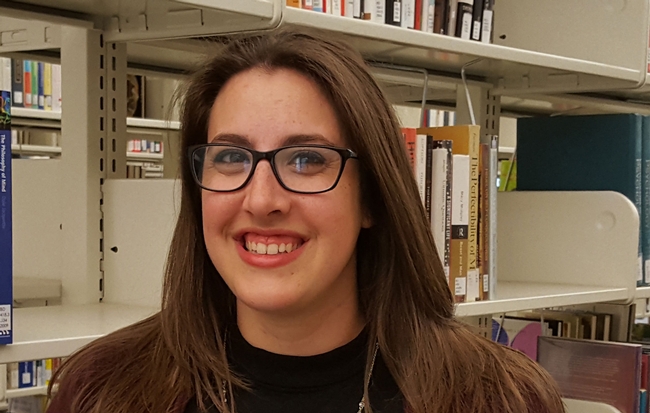UC archivist begins curating UC Cooperative Extension history
Going back to 1917, farm advisors in Merced County wrote meticulous weekly logs, documenting the number of miles they drove, the farmers they met, the phone calls they took and the trainings they held.
“It is a wealth of information about their activities, and I think it will be a really great resource for research,” said Lisa Vallen, a professional archivist who is working in the UC Merced library under a memorandum of understanding with UC Agriculture and Natural Resources.
The logs, plus annual reports and a collection of photos dating back to 1916 are among the first documents that Vallen will review as she embarks on a year-long pilot project to curate and preserve the history of UC Cooperative Extension.
A native of the Midwest, Vallen earned a bachelor's degree at Lake Forest College and a master's degree in library and information sciences from the University of Illinois, Urbana-Champaign (UIUC). While completing her graduate degree, she worked on preserving the UIUC library physical collection, digitizing theses and dissertations and processing a collection of author H. G. Wells' personal correspondence, publishers' correspondence, and other printed materials.
Vallen wrote about her experience with the H.G. Wells material on the UIUC Non Solus Blog. She quoted a letter written by Wells in 1945 to his brother Frederick about his frustration at not being credited for predicting the atomic bomb 30 years before it was dropped during World War II.
“I'm all right & everything misses me. I explained the inevitableness of the atomic bomb half a century ago & it is rather infuriating to have all these journalistic halfwits explaining that here's something Mr. Wells did not foresee,” the letter said.
Vallen has also written about the challenge of digitizing old, brittle publications in an effort to provide a usable surrogate for books that can no longer circulate due to their fragility.
“In many cases, we hold the only copy of record and it is incredibly important for this copy to be preserved and readily accessible to our users,” Vallen wrote in the UIUC Preservation Every Day Blog.
In her UC Cooperative Extension work, Vallen found that Merced County office has 393 cubic feet of historical items, totaling about 164,000 in number. There are photographs for which copyright must be established, publications that may already be digitized by UC ANR or UC Davis, weather and climate data, and plant and insect specimens that may or may not have historical value.
“First we'll be going through and identifying materials, arranging the materials, recording metadata, such as date, author and title to create descriptions,” Vallen said. “And then we can begin digitizing.”
UCCE in Ventura County is also part of the pilot. Vallen said the county office has 700 photographs dating from 1916 to the 1950s, and many are mounted on cards with hand-written captions.
“Photos on their own are great, but when they come with context, it has additional value,” she said.
Humboldt County UCCE historical items will round out Vallen's work under the current MOU, but staff and academics at all UCCE offices are encouraged to locate historical materials for preservation, including annual reports, project summaries and raw data.
“They don't have to do anything with it, just hold onto the material they have,” Vallen said. “Even if they think something isn't historical or I wouldn't be interested, I'd still like for them to hang on to it until I have a chance to view it.”

